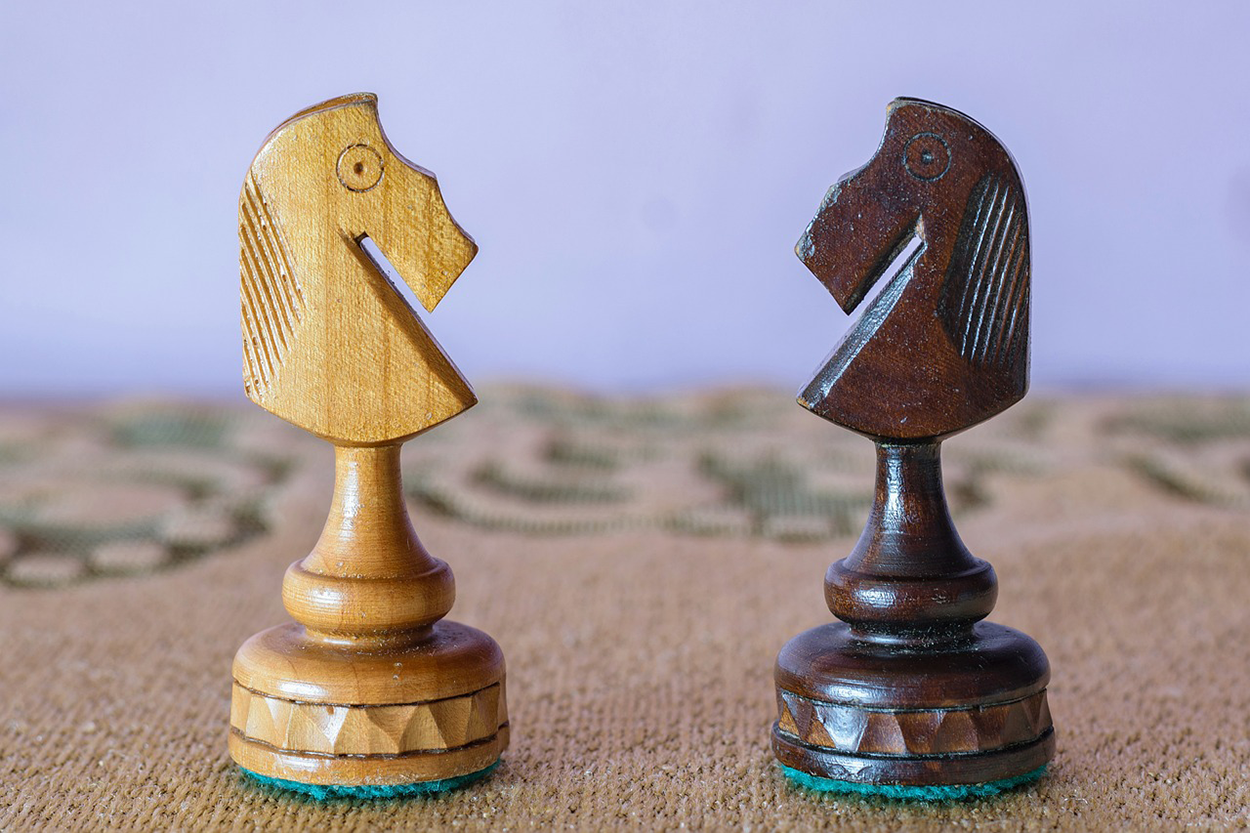Table of Contents |
Balance is a design principle that provides equilibrium to the placement of elements.
Balance is a visual quality identified through the arrangement of objects in a design.
Balance is deemed either asymmetrical or symmetrical.
Symmetrical balance is achieved when elements of equal size and shape are evenly distributed on both sides of a central axis, as shown in the image below.

EXAMPLE
A simple way to think about symmetrical balance is mirrored images. Consider two knights facing each other on a chess board. The chess pieces are the same size and shape; therefore, they occupy equal regions of space. When they face against each other, they have the same visual weight. Balancing two identical, or nearly identical, objects on the left and right sides of a design is sometimes referred to as bookending because the objects stand equal and opposite, like bookends holding up a collection of novels on a shelf.
Note that symmetrical balance is not always about objects on the left and right side of a page. Symmetrical arrangements can be on the top and bottom or juxtaposed diagonally. The objects in balance do not have to be exact copies of each other either. In the example above, the chess pieces are exactly the same with the exception of their colors.
In the image below, the woman’s face is divided by a central axis. While the design demonstrates contrast in value and subject matter, it is also a clear depiction of symmetrical balance. The left and right halves of the design are not exactly the same, but the division along the central axis line and the pairing of elements on opposite sides of the axis create balance. While there are obvious portions of the design in balance, such as the eyes, nose, and lips of the face, notice the nuances of the design such as the butterflies against the clouds.

Asymmetrical balance is when elements of different size and shape are distributed unevenly with a decentered axis.
Take a look at the image below.

In the example above, there are the same number of shapes on both sides of the center plane, but they're not evenly distributed.
Now let’s look back at our previous example of symmetrical balance. Remember the butterflies and the cloud? Even though the central figure in this image is an example of symmetrical balance, there is a subtle application of asymmetrical balance in the diagonal arrangement of the small, orange butterflies opposite the muted cloud behind the figure’s shoulder.

Asymmetrical balance requires that objects find balance against one another without being the same size. A smaller object with more visual interest can be counterbalanced against a larger object that is less striking visually. In the example below, the figure is moved to the side of the central plane, and the detail of the woman’s face is counterbalanced by the large red shape. By its nature, red draws the attention of the viewer, which allows the right half of the design to balance against the woman’s face.

Visual balance can be thought of like weight in physics.

Balance will be determined by visual weight, which is influenced by many other factors, like position, size, texture, shape, and even color.
Take a look at the image below.

Notice that the balance is asymmetrical because there are elements of varying size. Additionally, the elements are different shapes and in different positions. Still, it's a balanced piece overall. The woman rowing the boat is larger than the dogs individually, but the grouping of the dogs and their perspective in the forefront of the photograph increase their visual weight by enlarging their size. The woman’s blue clothes are more vivid than the dogs’ white fur. Together, the dogs and the woman strike an asymmetrical balance.
If the woman wasn’t present in the boat, then the design would be unbalanced. The same applies to the dogs. If either of the visual elements counterbalancing each other is taken away, the visual weight of the image will be disproportionate, resulting in an image that will feel lopsided to the viewer, or too heavy on one side.

Source: THIS TUTORIAL WAS AUTHORED BY MARIO E. HERNANDEZ FOR SOPHIA LEARNING. PLEASE SEE OUR TERMS OF USE.